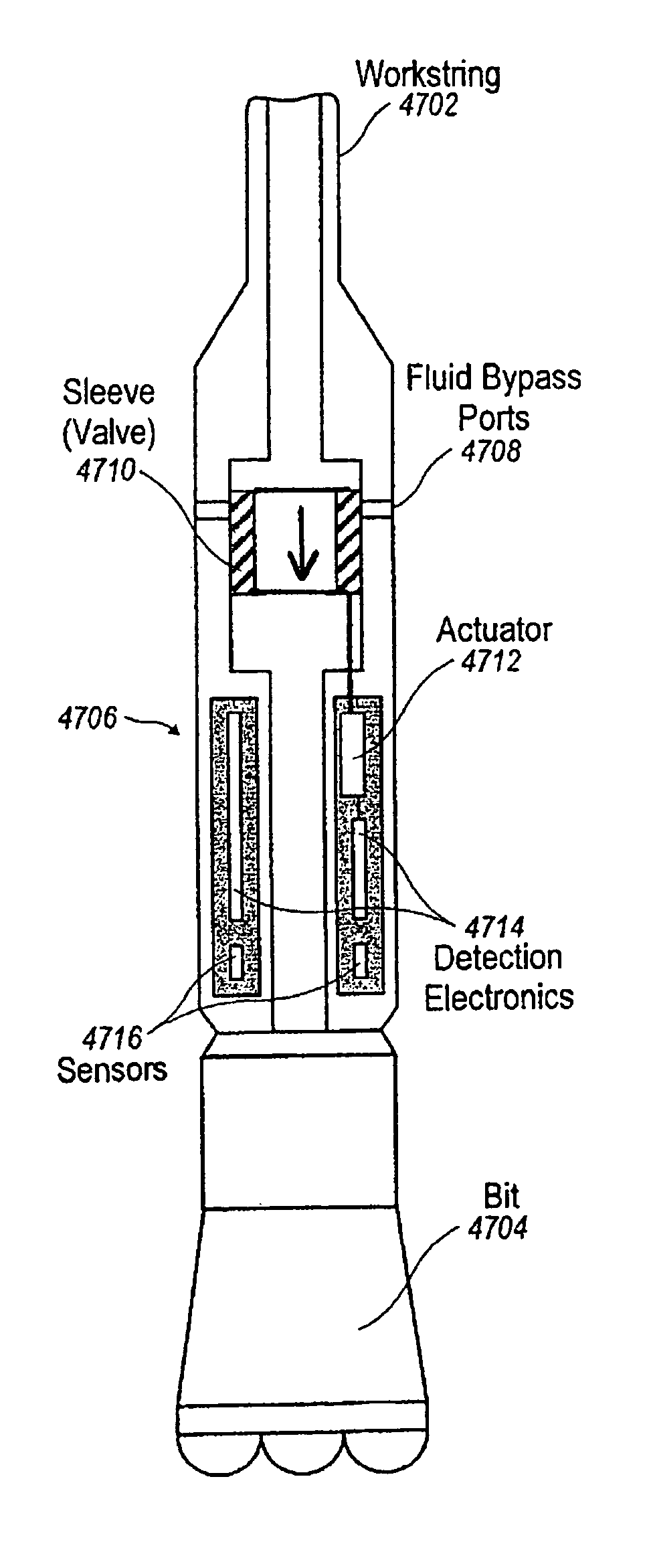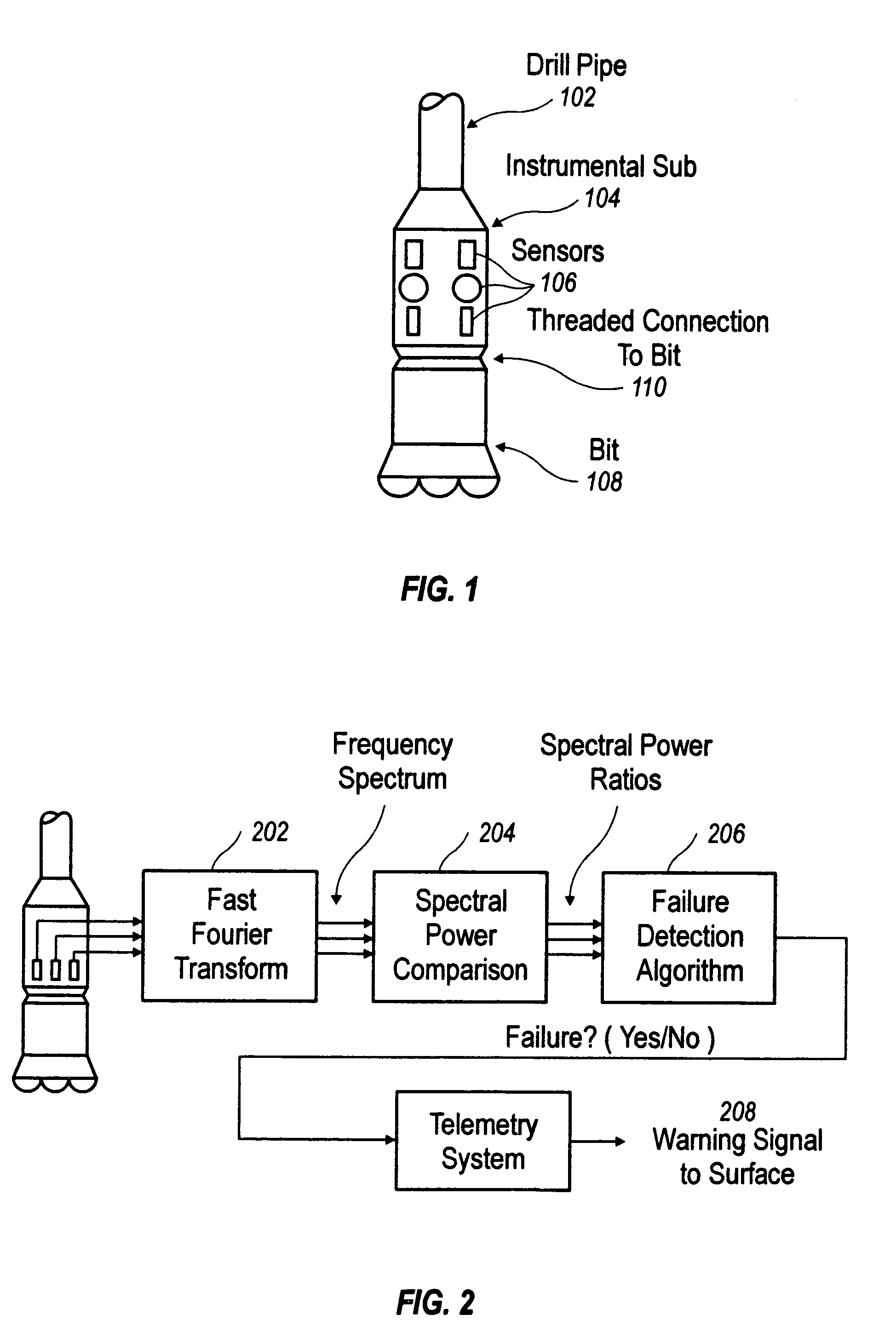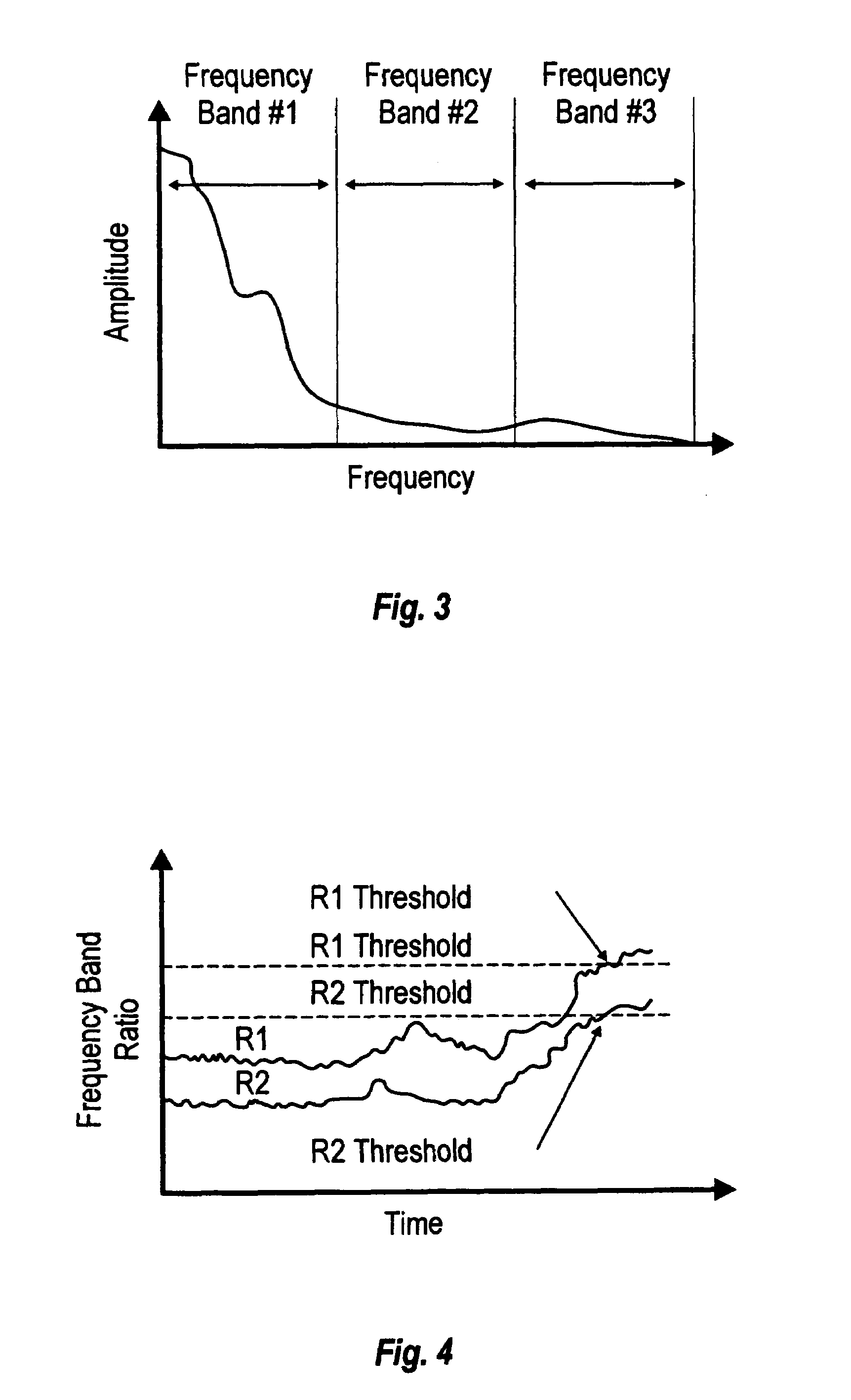Method and apparatus for monitoring the condition of a downhole drill bit, and communicating the condition to the surface
a drill bit and condition monitoring technology, applied in the field of downhole failure detection, can solve the problems of poor drilling performance, increased a portion of the drill bit left in the well, and achieve the effects of increasing the wear of the bottom hole assembly, poor drilling performance, and high probability of mechanical failur
- Summary
- Abstract
- Description
- Claims
- Application Information
AI Technical Summary
Benefits of technology
Problems solved by technology
Method used
Image
Examples
experimental verification
MSRA Method Experimental Verification
[0148]To verify the validity of the MSRA method, experimental data was collected from a laboratory test of an actual drill bit in operation. In this section the performance results of the MSRA method when applied to experimental data will be presented. Experimental data was collected while using an actual roller cone bit to drill into a cast iron target. Sensors were mounted to a sub directly above the bit and a data acquisition system was used to record the sensor readings. Strain gauges were attached to the sub with 120° phasing directly above the bit. The bit was held stationary in rotation and loaded vertically into the target while the target was turned on a rotary table.
[0149]The sampling rate for most of the data recorded was 5000 hertz. Test data was recorded at sample rates of 5000, 10,000, 20,000 and 50,000 hertz. A frequency analysis showed that a very high percentage of the total strain gauge signal power was below 250 hertz. For this...
PUM
 Login to View More
Login to View More Abstract
Description
Claims
Application Information
 Login to View More
Login to View More - R&D
- Intellectual Property
- Life Sciences
- Materials
- Tech Scout
- Unparalleled Data Quality
- Higher Quality Content
- 60% Fewer Hallucinations
Browse by: Latest US Patents, China's latest patents, Technical Efficacy Thesaurus, Application Domain, Technology Topic, Popular Technical Reports.
© 2025 PatSnap. All rights reserved.Legal|Privacy policy|Modern Slavery Act Transparency Statement|Sitemap|About US| Contact US: help@patsnap.com



